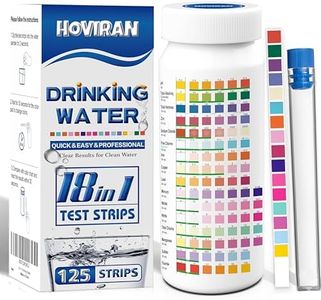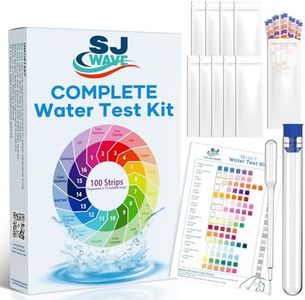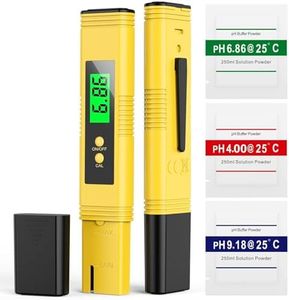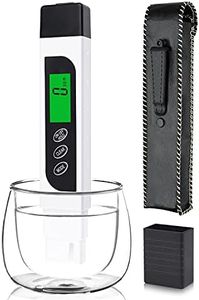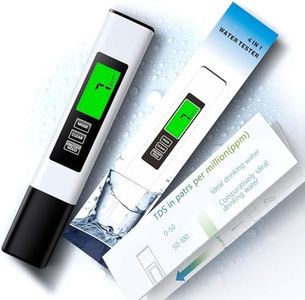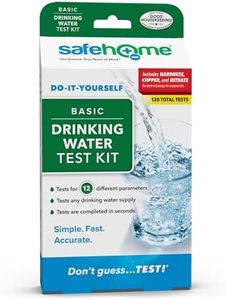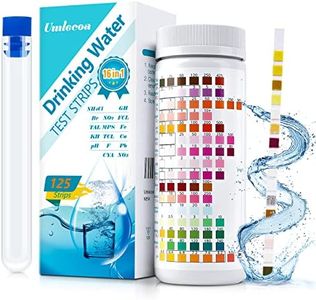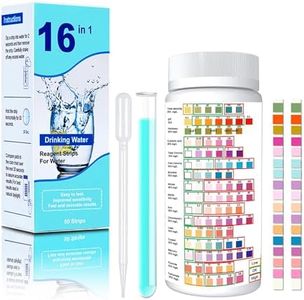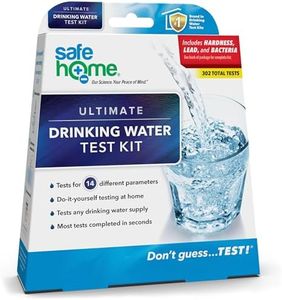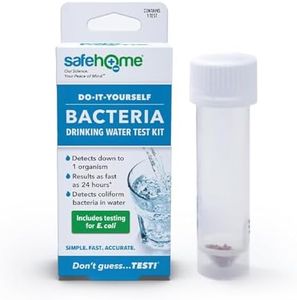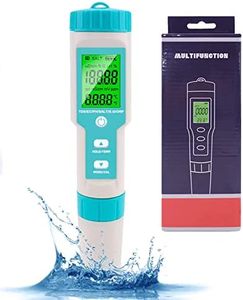We Use CookiesWe use cookies to enhance the security, performance,
functionality and for analytical and promotional activities. By continuing to browse this site you
are agreeing to our privacy policy
10 Best Drinking Water Testers
From leading brands and best sellers available on the web.By clicking on a link to a third party's website, log data is shared with that third party.
Buying Guide for the Best Drinking Water Testers
When it comes to picking a drinking water tester, your goal is to ensure that your water is safe and free from contaminants. These testers help you measure various properties of water, from general purity to the presence of specific chemicals or heavy metals. The right tester for you will depend on what you’re concerned about in your water—whether it's overall solubility, specific harmful substances, or just general reassurance. Understanding the different features of drinking water testers can help you choose a device that suits your needs and gives you accurate, reliable results.Test Parameters (What substances are tested)This refers to what your water tester is able to detect. Some testers check for basic properties like pH, hardness, or Total Dissolved Solids (TDS), while others go deeper to look for specific dangers such as lead, chlorine, bacteria, nitrates, or pesticides. The importance of this spec lies in the health risks associated with different contaminants, so knowing what your tester checks for is key. Simple testers generally cover one or two aspects, while more advanced, multi-parameter testers cover a wider range. If you only want a general idea of water quality, a basic TDS or pH tester may be sufficient. However, if you have specific concerns (for example, old pipes in your home that might leach lead, or agricultural runoff in your area), look for a tester that targets those substances.
Testing Method (Digital vs. Chemical Tests)Drinking water testers use either digital (electronic sensors) or chemical (color-changing reagents) methods. Digital testers usually give you a numeric read-out and are straightforward to use, making them good for regular monitoring of things like TDS or pH. Chemical strip or drop tests, on the other hand, are better for detecting very specific substances or contaminants, often giving results as a color change that you compare to a chart. If you prioritize ease of use and quick readings, a digital tester is a good option. If you want to investigate particular compounds, or check for things that require a high level of sensitivity, chemical kits may suit you better.
Accuracy and SensitivityAccuracy tells you how close your tester’s result is to the actual value, while sensitivity refers to the smallest amount of contaminant that the tester can detect. Higher accuracy and sensitivity are important when the smallest variations in contaminant levels could make a big difference to your health or taste of water. Typically, devices meant for home use have adequate accuracy for daily needs, but if you have health sensitivities or stricter needs (like for aquariums or medical uses), look for testers that specify their accuracy and sensitivity ranges. As a general rule, pick a tester whose precision matches the seriousness of your water quality concerns.
Ease of Use and MaintenanceThis refers to how simple it is to operate the tester, understand the results, and keep it clean or calibrated. Some testers are simple to dip in water and read, while others need regular calibration or have components that must be replaced or cleaned. If you want quick, hassle-free testing, look for devices that are described as 'user-friendly', have auto-calibration features, and clear, easy-to-read results. Only select a more complex device if you’re comfortable with the upkeep or you need the higher level of functionality it offers.
Portability and DurabilityPortable testers are smaller and battery-powered, designed for carrying between home, work, or outdoor locations, while bench testers or kits can be bulkier but may offer more features. Durability means the device can handle drops, water splashes, or regular travel without breaking. If you plan to monitor water quality while traveling, hiking, or in multiple locations, choose a compact, robust tester. For home use, where the tester stays in one place, portability may not be as important, but overall build quality still matters if you want it to last.
